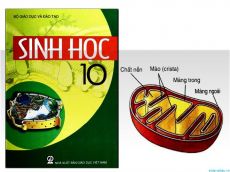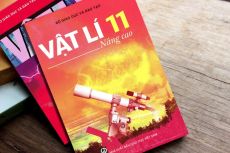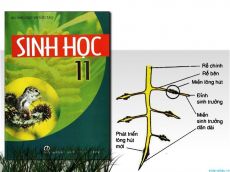Read the following passage and mark the letter A, B, C, or D on your answer sheet to indicate the correct word or phrase that best fits each of the numbered blanks.
In the past, the process of choosing a career was a much simpler matter than it is today. Aboy often followed in his father’s footsteps. His sister learned the household skills that (1)..... her to become a wife and mother. Nowadays young people grow up in a much freer society (2)........they enjoy almost unlimited career opportunities. In recent years, there (3)..... an enormous increase in the kinds of vocations from which it is possible to choose. In addition, many of the barriers to career opportunity that existed only a few decades ago, such as (4).......... based on sex or religion or ethnic origins, are (5)............... disappearing.
(4)..................
Suy nghĩ và trả lời câu hỏi trước khi xem đáp án
Lời giải:
Báo sai- judgment (n): sự đánh giá, óc phán đoán
- perception (n): sự tiếp nhận, sự nhận thức
- devotion (n): sự tận tụy, sự hiến dâng
- discrimination (n): sự phân biệt đối xử
“In addition, many of the barriers to career opportunity that existed only a few decades ago, such as discrimination based on sex or religion or ethnic origins...” (Thêm vào đó, nhiều rào cản đối với cơ hội nghề nghiệp đã tồn tại một vài thập kỉ trước đây như sự phân biệt đối xử dựa trên giới tính hoặc tôn giáo hoặc nguồn gốc dân tộc...)
Câu hỏi liên quan
-
Read the following passage, and mark the letter A. B, C, or D on your answer sheet to indicate the correct answer to each of the questions.
Loneliness is a curious thing. Most of us can remember feeling most lonely when we were not in fact alone at all, but when we were surrounded by people. Everyone has experienced, at some time, that utter sense of isolation that comes over you when you are at a party, in a room full of happy laughing people, or in an audience at a theatre or a lecture. It suddenly seems to you as if everybody knows everybody else, everybody is sure of himself, everybody knows what is going on; everybody, that is, except you. This feeling of loneliness which can overcome you when are in a crowd is very difficult to get rid of. People living alone - divorced, widowed or single people - are advised to tackle their loneliness by joining a club or society, by going out and meeting people. Does this really help? And what do you do if you are already surrounded by people? There are no easy solutions. Your first day at work, or at a new school or university, is a typical situation in which you are likely to feel lonely. You feel lonely because you feel left out of things. You feel that everybody else is full of confidence and knows what to do, but you are adrift and helpless. The fact of the matter is that, in order to survive, we all put on a show of self-confidence to hide our uncertainties and doubts. So it is wrong to assume that you are alone. In a big city it is particularly easy to get the feeling that everybody except you is leading a full, rich, busy life. Everybody is going somewhere, and you tend to assume that they are going somewhere nice and interesting, where they can find life and fulfilment. You are also going somewhere, and there is no reason at all to believe that your destination is any less, or, for that matter, any more exciting than the next man's. The trouble is that you may not be able to hide the fact that you are lonely, and the miserable look on your face might well put people off. After all, if you are at a party you are not likely to try to strike up a conversation with a person who has a gloomy expression on his face and his lips turned down at the comers. So trying to look reasonably cheerful is a good starting point in combating loneliness, even if you are choking inside. The next thing to avoid is finding yourself in a group where in fact you are a stranger, that is, in the sort of group where all the other people already know each other. There is a natural tendency for people to stick together, to form 'cliques'. You will do yourself no good by trying to establish yourself in a group which has so far managed to do very well without you. Groups generally resent intrusion, not because they dislike you personally, but because they have already had to work quite hard to turn the group into the functioning unit. To include you means having to go over a lot of ground again, so that you can learn their language, as it was, and get involved in their conversation at their level. Of course if you can offer something the group needs, such as expert information, you can get in quickly. In fact the surest way of getting to know others is to have an interest in common with them. There is no guarantee that you will then like each other, but at least part of your life will be taken up with sharing experiences with others. It is much better than always feeling alone. If all this seems to be a rather pessimistic view of life, you have to accept the fact that we are all alone when it comes down to it. When the most loving couple in the world kiss and say goodnight, as soon as the husband falls asleep, the wife realizes that she is alone, that her partner is as far away as if he were on another planet. But it is no cause for despair: there is always tomorrow.In order to join an established group you would need to be able to....................
-
Since the dawn of time, people have found ways to communicate with one another. Smoke signals and tribal drums were some of the earliest forms of communication. Letters, carried by birds or by humans on foot or on horseback, made it possible for people to communicate larger amounts of information between two places. The telegram and telephone set the stage for more modern means of communication. With the invention of the cellular phone, communication itself has become mobile.
For you, a cell phone is probably just a device that you and your friends use to keep in touch with family and friends, take pictures, play games, or send text message. The definition of a cell phone is more specific: it is a hand- held wireless communication device that sends and receives signals by way of small special areas called cells.
Walkie - talkies, telephones and cell phones are duplex communication devices: They make it possible for two people to talk to each other. Cell phones and walkie- talkies are different from regular phones because they can be used in many different locations. A walkie- talkie is sometimes called a half- duplex communication device because only one person can talk at a time. A cell phone is a full- duplex device because it uses both frequencies at the same time. A walkie-talkie has only one channel. A cell phone has more than a thousand channels. A walkie- talkie can transmit and receive signals across a distance of about a mile. A cell phone can transmit and receive signals over hundreds of miles. In 1973, an electronic company called Motorola hired Martin Cooper to work on wireless communication. Motorola and Bell Laboratories (now AT& T) were in a race to invent the first portable communication device.
Martin Cooper won the race and became the inventor of the cell phone. On April 3, 1973, Cooper made the first cell phone call to his opponent at AT& T while walking down the streets of New York city. People on the sidewalks gazed at cooper in amazement. Cooper's phone was called A Motorola Dyna- Tac. It weighed a whopping 2.5 pounds (as compared to today's cell phones that weigh as little as 3 or 4 ounces)
After the invention of his cell phone, Cooper began thinking of ways to make the cell phone available to the general public. After a decade, Motorola introduced the first cell phone for commercial use. The early cell phone and its service were both expensive. The cell phone itself cost about $ 3, 500. In 1977, AT & T constructed a cell phone system and tried it out in Chicago with over 2, 000 customers. In 1981, a second cellular phone system was started in the Washington,D.C and Baltimore area. It took nearly 37 years for cell phones to become available for general public use. Today, there are more than sixty million cell phone customers with cell phones producing over thirty billion dollars per years.What is the main idea of the passage?
-
Read the following passage and mark the letter A, B, C or D on your answer sheet to indicate the correct answer to each of the questions:
Neil Armstrong started flying at an early age. He became interested in airplanes at the age of 2. At 15, he took flying lessons. He got a license to fly at 16. He learned how to fly before he learned how to drive a car. At university, he studied aeronautical engineering. This is the study of designing and making aircraft.
After Armstrong became an astronaut in 1962, he was trained for 4 years for the Apollo program. The Apollo mission was to put a man on the moon in ten years. On July 16, 1969, the Apollo 11 landed on the moon. Because Armstrong was the leader, he became the first man to step on the moon. He said, "This is one small step for a man, one giant leap for mankind." He and his fellow astronaut, Buzz Aldrin, walked on the moon for two and a half hours. They collected rocks and did some experiments.What is the main idea of the passage?
-
Read the following passage and mark the letter A, B, C or D on your answer sheet to indicate the correct answer to each of the questions:
The ocean bottom - a region nearly 2.5 times greater than the total land area of Earth - is a vast frontier that even today is largely unexplored and uncharted. Until about a century ago, the deep-ocean floor was completely inaccessible, hidden beneath waters averaging over 3,600 meters deep. Totally without light and subjected to intense pressures hundreds of times greater than at the Earth's surface, the deep-ocean bottom is a hostile environment to humans, in some ways as forbidding and remote as the void of outer space.
Although researchers have taken samples of deep-ocean rocks and sediments for over a century, the first detailed global investigation of the ocean bottom did not actually start until 1968, with the beginning ofthe National Science Foundation's Deep Sea Drilling Project (DSDP). Using techniques first developed for the offshore oil and gas industry, the DSDP's drill ship, the Glomar Challenger, was able to maintain a steady position on the ocean's surface and drill in very deep waters, extracting samples of sediments and rock from the ocean floor.
The Glomar Challenger completed 96 voyages in a 15-year research program that ended in November 1983. During this time, the vessel logged 600,000 kilometers and took almost 20,000 core samples of seabed sediments and rocks at 624 drilling sites around the world. The Glomar Challenger's core samples have allowed geologists to reconstruct what the planet looked like hundreds of millions of years ago and to calculate what it will probably look like millions of years in the future. Today, largely on the strength of evidence gathered during the Glomar Challenger's voyages, nearly all earth scientists agree on the theories of plate tectonics and continental drift that explain many of the geological processes that shape the Earth.
The cores of sediment drilled by the Glomar Challenger have also yielded information critical to understanding the world's past climates. Deep-ocean sediments provide a climatic record stretching back hundreds of millions of years, because they are largely isolated from the mechanical erosion and the intense chemical and biological activity that rapidly destroy much land-based evidence of past climates. This record has already provided insights into the patterns and causes of past climatic change - information that may be used to predict future climates.Which of the following is NOT mentioned in the passage as being a result of the Deep Sea Drilling Project?
-
Increasing numbers of parents in the U.S. are choosing to teach their children at home. In fact, the U.S. Department of Education has estimated that in 1999, about 850,000 children were being homeschooled. Some educational experts say that the real number is double this estimate, and the ranks of homeschooled children seem to be growing at the average rate of about eleven percent every year.
At one time, there was a theory accounting for homeschooling: it was traditionally used for students who could not attend school because of behavioral or learning difficulties. Today, however, more parents are taking on the responsibility of educating their own children at home due to their dissatisfaction with the educational system. Many parents are unhappy about class size, as well as problems inside the classroom. Teacher shortages and lack of funding mean that, in many schools, one teacher is responsible for thirty or forty students. The children are, therefore, deprived of the attention they need. Escalating classroom violence has also motivated some parents to remove their children from school.Although there have been a lot of arguments for and against it, homeschooling in the U.S. has become a multi-million dollar industry, and it is growing bigger and bigger. There are now plenty of websites, support groups, and conventions that help parents protect their rights and enable them to learn more about educating their children. Though once it was the only choice for troubled children, homeschooling today is an accepted alternative to an educational system that many believe is failing.
The past participle “homeschooled” in the first paragraph is best equivalent to “_ at home”
-
Read the following passage and mark the letter A, B, C, or D on your answer sheet to indicate the correct word or phrase that best fits each of the numbered blanks
Welcome to the Netherlands, a tiny country that only extends, at its broadest, 312 km north to south, and 264 km east to west - (1) ......... the land area increases slightly each year as a result of continuous land reclamation and drainage. With a lot of heart and much to offer, ‘Holland,’ as it is (2).......known to most of us abroad - a name stemming from its once most prominent provinces - has more going on per kilometer than most countries, and more English-speaking natives. You’ll be impressed by its (3).....cities and charmed by its countryside and villages, full of contrasts. From the exciting variety on offer, you could choose a romantic canal boat tour in Amsterdam, a Royal Tour by coach in The Hague, or a hydrofoil tour around the biggest harbour in the world - Rotterdam. In season you could visit the dazzling bulb fields, enjoy a full day on a boat, or take a bike tour through the pancake-flat countryside spiced with windmills. The possibilities are countless and the nationwide tourist office is on hand to give you information and help you (4)...... reservations. You’ll have (5)........language problems here, as the Dutch are true linguists and English is spoken here almost universally.
(2)........................... -
Read the following passage and mark the letter A, B, C or D on your answer sheet to indicate the correct answer to each of the questions:
Living things include both the visible world of animals, plants, and fungi as well as the invisible world of bacteria and viruses. On a basic level, we can say that life is ordered. Organisms have an enormously complex organization. We're all familiar with the intricate systems of the basic unit of life, the cell. Life can also "work." Living creatures can take in energy from the environment. This energy, in the form of food, is transformed to maintain metabolic processes and for survival. Life grows and develops. This means more than just replicating or getting larger in size. Living organisms also have the ability to rebuild and repair themselves when injured. Life can reproduce. Think about the last time you accidentally stubbed your toe. Almost instantly, you moved back in pain. Finally, life can adapt and respond to the demands placed on it by the environment. There are three basic types of adaptations that can occur in higher organisms.
Reversible changes occur as a response to changes in the environment. Let's say you live near sea level and you travel to a mountainous area. You may begin to experience difficulty breathing and an increase in heart rate as a result of the change in altitude. These symptoms go away when you go back down to sea level. Body-related changes occur as a result of prolonged changes in the environment. Using there previous example, if you were to stay in the mountainous area for a long time, you would notice that your heart rate would begin to slow down and you would begin to breath normally. These changes are also reversible. Genotypic changes (caused by genetic mutation) take place within the genetic makeup of the organism and are not reversible. An example would be the development of resistance to pesticides by insects and spiders.What does the word “reversible” in the passage mean?
-
Read the following passage and mark the letter A, B, C, or D on your answer sheet to indicate the correct answer to each of the questions:
Theresa May, the second female Britain’s prime minister following Margaret Thatcher, revealed in 2013 that she had been given a diagnosis of Type 1 diabetes, a condition that requires daily insulin injections. Asked later how she felt about the diagnosis, she said her approach to it was the same as toward everything in her life: “Just get on and deal with it.” That kind of steeliness brought her to center stage in the aftermath of Britain’s vote to leave the European Union and the feuding that erupted in the Conservative Party over who would succeed David Cameron.
Ms” May, 59 years old, is the country’s longest-serving home secretary in half a century, with a reputation for seriousness, hard work and above all, determination. She is one of a growing number of women in traditionally male-dominated British politics rising to the upper position of leadership.
Bom in 1956, Ms. May grew up mainly in Oxford shire, an only child who was first drawn to the Conservative Party at age 12. As a conscientious student, she never rebelled against her religious upbringing and remains a regular churchgoer. Tellingly, her sports hero was Geoffrey Boycott, a solid, stubborn cricketer who specialized in playing the long game.
Like many other Britain’s prime minister including Tony Blair, Sir Robert Peel and Margaret Thatcher, she won a place at Oxford. But while almost every other political leader got there by way of Eton College and joined Oxford’s hedonistic Bullingdon Club, she attended a state secondary school and had a more sedate university career. After unsuccessful attempts to be elected to the House of Commons in 1992 and 1994, she finally became an MP in 1997 general election.
May is known for a love of fashion and in particular distinctive shoes. She even wore leopard-print shoes to her final Cabinet meeting as Home Secretary in early 2016. However, she has been quite critical of the media focusing on her fashion instead of her achievement as a politician. May also describes cooking and walking as primary hobbies, and if someone is raising questions about why walking can be classified as a hobby, she elaborates in a column for Balance magazine, in which she wrote of her battle with diabetes.The word “hedonistic” is closest in meaning to ..................
-
Bees, classified into over 10,000 species, are insects found in almost every part of the world except the northernmost and southernmost regions. One commonly known species is the honeybee, the only bee that produces honey and wax. Humans use the wax in making candles, lipsticks, and other products, and they use the honey as a substance that people eat to maintain life and growth. While gathering the nectar and pollen with which they make honey, bees are simultaneously helping to fertilize the flowers on which they land. Many fruits and vegetables would not survive if bees did not carry the pollen from blossom to blossom.
Bees live in a structured environment and social structure within a hive, which is a nest with storage space for the honey. The different types of bees each perform a unique function. The worker bee carries nectar to hive in a special stomach called a honey stomach. Other workers make beeswax and shape it into a honeycomb, which is a waterproof mass of six-sided compartments, or cells. The queen lays eggs in completed cells. As the workers build more cells, the queen lays more eggs.
All workers, like the queen, are female, but the workers are smaller than the queen. The male honeybees are called drones; they do no work and cannot sting. They are developed from unfertilized eggs, and their only job is to impregnate a queen. The queen must be fertilized in order to lay more worker eggs. During the season when less honey is available and the drone is of no further use, the workers block the drones from eating the honey so that they will starve to death.The passage implies that bees can be found in each of the following parts of the world except ..........
-
Read the following passage and mark the letter A, B, C, or D on your answer sheet to indicate the correct answer to each of the questions:
Theresa May, the second female Britain’s prime minister following Margaret Thatcher, revealed in 2013 that she had been given a diagnosis of Type 1 diabetes, a condition that requires daily insulin injections. Asked later how she felt about the diagnosis, she said her approach to it was the same as toward everything in her life: “Just get on and deal with it.” That kind of steeliness brought her to center stage in the aftermath of Britain’s vote to leave the European Union and the feuding that erupted in the Conservative Party over who would succeed David Cameron.
Ms” May, 59 years old, is the country’s longest-serving home secretary in half a century, with a reputation for seriousness, hard work and above all, determination. She is one of a growing number of women in traditionally male-dominated British politics rising to the upper position of leadership.
Bom in 1956, Ms. May grew up mainly in Oxford shire, an only child who was first drawn to the Conservative Party at age 12. As a conscientious student, she never rebelled against her religious upbringing and remains a regular churchgoer. Tellingly, her sports hero was Geoffrey Boycott, a solid, stubborn cricketer who specialized in playing the long game.
Like many other Britain’s prime minister including Tony Blair, Sir Robert Peel and Margaret Thatcher, she won a place at Oxford. But while almost every other political leader got there by way of Eton College and joined Oxford’s hedonistic Bullingdon Club, she attended a state secondary school and had a more sedate university career. After unsuccessful attempts to be elected to the House of Commons in 1992 and 1994, she finally became an MP in 1997 general election.
May is known for a love of fashion and in particular distinctive shoes. She even wore leopard-print shoes to her final Cabinet meeting as Home Secretary in early 2016. However, she has been quite critical of the media focusing on her fashion instead of her achievement as a politician. May also describes cooking and walking as primary hobbies, and if someone is raising questions about why walking can be classified as a hobby, she elaborates in a column for Balance magazine, in which she wrote of her battle with diabetes.The word “approach” is closest in meaning to ..................
-
Before the 1500’s, the Western plains of North America were dominated by farmers. One group, the Mandans, lived in the upper Missouri River country, primarily in present-day North Dakota. They had large villages of houses built close together. The tight arrangement enabled the Mandans to protect themselves more easily from the attacks of others who might seek to obtain some of the food these highly capable farmers stored from one year to the next.
The women had primary responsibility for the fields. They had to exercise considerable skill to produce the desired results, for their northern location meant fleeting growing seasons. Winter often lingered; autumn could be ushered in by severe frost. During the spring and summer, drought, heat, hail, grasshoppers, and other frustrations might await the wary grower.
Under such conditions, Mandan women had to grow maize capable of weathering adversity. They began as early as it appeared feasible to do so in the spring, clearing the land, using fire to clear stubble from the fields and then planting. From this point until the first green corn could be harvested, the crop required labor and vigilance. Harvesting proceeded in two stages. In August the Mandans picked a smaller amount of the crop before it had matured fully. This green corn was boiled, dried, and shelled, with some of the maize slated for immediate consumption and the rest stored in animal-skin bags. Later in the fall, the people picked the rest of the corn. They saved the best of the harvest for seeds or for trade, with the remainder eaten right away or stored for later use in underground reserves. With appropriate banking of the extra food, the Mandans protected themselves against the disaster of crop failure and accompanying hunger.
The women planted another staple, squash, about the first of June, and harvested it near the time of the green corn harvest. After they picked it, they sliced it, dried it, and strung the slices before they stored them. Once again, they saved the seed from the best of the year`s crop. The Mandans also grew sunflowers and tobacco; the latter was the particular task of the older men.Why does the author believe that the Mandans were skilled farmers?
-
Read the following passage and mark the letter A, B, C or D on your answer sheet to indicate the correct answer to each of the questions:
Have you ever wondered what it would be like to get your dream job? It can take years to get the education and develop the skills you need for the perfect job. However, there is a way to experience your dream job without having to get the required training or degree. Since 2004, Brian Kurth’s company, Vocation Vacations, has been connecting people with mentors who have the jobs of their dreams.
Kurth had been working for a phone company before starting his own company. He didn’t like his job, and he had a long time to think about it on his drive to and from work. He also thought about his dream job while driving. He was interested in becoming a dog trainer, but he didn’t want to take any chances and switch to a field he didn’t have experience in. He really wanted to know what the job was like and if it was realistic for him to work towards his goal. So, he found a mentor – a dog trainer that could tell him about the job and everything it involved. After that, he helped his friends find mentors to explore jobs they were interested in. They thought it was helpful to talk to people who had their dream jobs before spending lots of time and money getting the training they needed for those jobs.
Kurth saw how much this helped his friends, so he decided to turn it into his business. He started Vocation Vacations in 2004, and by 2005, the company was offering experience with over 200 dream jobs. Today, about 300 mentors work with the company to share their knowledge about their jobs. Customers pay to experience the job of their dreams and work with these mentors to see what a job is really like. A “job vacation” costs between $350 and $3,000 and can be for one to three days. Many people use Vocation Vacations to see if their dream job is a career path they want to continue. Others do it just to experience the job of their dreams one time.
Vocation Vacations jobs are in the fields of fashion, food, entertainment, sports and animals. Many people want to try glamorous jobs. For example, they want to try working as actors, music producers, photographers and fashion designers. According to Kurth, some other popular dream jobs are working as bakers, hotel managers and wedding planners.What do mentors at Vocation Vacations do?
-
Read the following passage and mark the letter A, B, C, or D on your answer sheet to indicate the correct answer to each of the questions:
In the exploration of the linguistic life cycle, it is apparent that it is much more difficult to learn a second language in adulthood than a first language in childhood. Most adults never completely master foreign language, especially in phonology - hence the ubiquitous foreign accent. Their development often "fossilizes" into permanent error patterns that no teaching or correction can do. Of course, there are great individual differences, which depend on effort, attitudes, amount of exposure, quality of teaching and plain talent, but there seems to be a cap for the best adults in the best circumstances.
Many explanations have been advanced for children's superiority: they exploit Motherless (the simplified, repetitive conversation between parents and children), make errors oneself- consciously, are more motivated to communicate, like to conform, are not set in their ways, and have no first language to interfere. But some of these accounts are unlikely, based on what is known about how language acquisition works. Recent evidence is calling these social and motivation explanations into doubt. Holding every other factor constant, a key factor stands out: sheer age.
Systematic evidence comes from the psychologist Elisa Newport and her colleagues. They tested Korean and Chinese-born students at the University of Illinois who had spent at least ten years in the United States. The immigrants were given a list of 276 simple English sentences, half of them containing some grammatical errors. The immigrants who came to the United States between the ages of 3 and 7 performed identically to American bom students. Those who arrived between the ages of 8 and 15 did worse the later they arrived, and those who arrived between 17 and 39 did the worst of all, and showed huge variability unrelated to their age of arrival.It can be inferred from the passage that "phonology" is the study of the.................. of a language.
-
Read the following passage and mark the letter A, B, C, or D on your answer sheet to indicate the correct answer to each of the questions:
Every year about two million people visit Mount Rushmore, were the faces of four U.S presidents were carved in granite by sculptor Gutzon Borglum and his son, the late Lincoln Borglum. The creation of the Mount Rushmore monument Line took 14 years – from 1927 to 1941 – and nearly a million dollars. There were times when money was difficult to come by and many people were jobless. To move more than 400,000 tons of rock, Borglum hired laid-off workers from the closed-down mines in the Black Hills area. He taught these men to dynamite, drill, carve, and finish the granite as they were hanging in midair in his specially devised chairs, which had many safety features. Borglum was proud of the fact that no workers were killed or severely injured during the years of blasting and carving.
During the carving, many changes in original design had to be made to keep the carved heads free of large fissures that were uncovered. However, not all the cracks could be avoided, so Borglum concocted a mixture of granite dust, white lead, and linseed oil to fill them.
Every winter, water from melting snows gets into the fissures and expands as it freezes, making the fissures bigger. Consequently, every autumn maintenance work is done to refill the cracks. The repairers swing out in space over a 500-foot drop and fix the monument with the same mixture that Borglum used to preserve this national monument for future generations.The word ‘which’ is paragraph 1 refers to _
-
Read the following passage and mark the letter A, B, C, or D on your answer sheet to indicate the correct word or phrase that best fits each of the numbered blanks.
A healthy way to know a city Maybe you are staying in a city, and there is no park nearby where you can take your morning job. One of the more recent trend is to go on a running tour, but you are not leading the way. Rather, a running enthusiast (1)....... knows the best (2)..... in the city acts as your guide. You are going out for a run, but you are also being shown highlights of the city while you are doing it.
Guided running tours are a trend that seems to be catching (3)...... in quite a few of the bigger cities in the United States. New York City, Chicago, and San Francisco are just three of the major cities that have running tours in (4)........... They offer these tours to individuals, groups, and even for corporate events. If you are going into a city with colleagues to attend a business meeting or a convention, what better way is there to see the city and network with others (5) .......while taking a healthy run?
(2)....................................... -
Read the following passage and mark the letter A, B, C, or D on your answer sheet to indicate the correct answer to each of the questions:
Thirty years ago, Lake Ponkapog in Hartwell, New Jersey, was full of life. Many birds and animals lived beside the water, which was full of fish. Now there are few birds, animals, and fish. The lake water is polluted. It is a dirty brown colour, and it is filled with strange plants.
How did this happen? First, we must think about how water gets into Lake Ponkapog. When it rains, water comes into the lake from all around. In the past, there were woods all around Lake Ponkapog, so the rainwater was clean.
Now there are many homes on the lake hore. People often use the chemicals in their gardens. They use other chemicals inside their houses for cleaning and killing insects. There are also many businesses. Businesses use chemicals in their machines or stores. Other chemicals fall onto the ground from cars or trucks. When it rains, the rainwater flows by these homes and businesses. It picks up all the chemicals and then pours them into the lake. They pollute the water and kill the animal life.
There is still another problem at the lake: exotic plants. These plants come from other countries. They have no natural enemies here, and they grow very quickly. In a short time, they can fill up a lake. Then there is no room for other plants. The plants that normally grow there die. These plants gave many animals and fish their foods or their homes. So now those animals and fish die, too.
People in Hartwell are worried. They love their lake and want to save it. Will it be possible? A clean lake must have clean rainwater going into it. Clean rainwater is possible only if people are more careful about chemicals at home and at work. They must also be more careful about gas and oil and other chemicals on the ground.To save Lake Ponkapog, people need to .
-
For a time, the Hubble telescope was the brunt of jokes and subject to the wrath of those who believed the U.S government had spent too much money on space projects that served no valid purpose. The Hubble was sent into orbit with a satellite by the Space Shuttle Discovery in 1990 amid huge hype and expectation. Yet after it was in position, it simply did not work. Because the primary mirror was misshapen, it was not until 1993 that the crew of the Shuttle Endeavor arrived like roadside mechanics, opened the hatch that was installed for the purpose, and replaced the defective mirror with a good one.
Suddenly, all that had originally been expected came true. The Hubble telescope was indeed the “window on the universe”, as it had originally been dubbed. When you look deep into space, you are actually looking back through time, because even though light travels at 186,000 miles a second, it requires time to get from one place to another. In fact, it is said that in some cases, the Hubble telescope is looking back eleven billion years to see galaxies already forming. The distant galaxies are speeding away from Earth, some travelling at the speed of light.
Hubble has viewed exploding stars such as the Eta Carinae, which clearly displayed clouds of gas and dust billowing outward from its poles at 1.5 million miles an hour. Prior to Hubble, it was visible from traditional telescopes on Earth, but its details were not as certainable. But now, the evidence of the explosion is obvious. The star still burns five million times brighter than the Sun and illuminates clouds from the inside.
Hubble has also provided a close look at black holes, which are described as comic drains. Gas and dust swirl around the drain and are slowly sucked in by the incredible gravity. It has also looked into an area that looked empty to the naked eye and, within a region the size of a grain of sand, located layer upon layer of galaxies, with each galaxy consisting of billions of stars.
The Hubble telescope was named after Edwin Hubble, a 1920s astronomer who developed a formula that expresses the proportional relationship of distances between clusters of galaxies and the speeds at which they travel. Astronomers use stars known as Cepheid variables to measure distances in space. These stars dim and brighten from time to time, and they are photographed over time and charted. All the discoveries made by Hubble have allowed astronomers to learn more about the formation of early galaxies.The word “billowing” in the third paragraph is closest meaning to ..........
-
Read the following passage and mark the letter A, B, C, or D on your answer sheet to indicate the correct answer to each of the questions:
It is often the case with folktales that they develop from actual happenings but in their development lose much of their factual base; the story of Pocahontas quite possibly fits into this category of folktale. This princess of the Powhatan tribe was firmly established in the lore of early America and has been made even more famous by the Disney film based on the folktale that arose from her life. She was a real-life person, but the actual story of her life most probably different considerably from the folktale and the movie based on the folktale. Powhatan, the chief of a confederacy of tribes in Virginia, had several daughters, none of whom was actually named Pocahontas. The nickname means “playful one,” and several of Powhatan’s daughters were called Pocahontas. The daughter of Powhatan who became the subject of the folktale was named Matoaka. What has been verified about Matoaka, or Pocahontas as she has come to be known, is that she did marry an Englishman and that she did spend time in England before she died there at a young age. In the spring of 1613, a young Pocahontas was captured by the English and taken into Jamestown. There she was treated with courtesy as the daughter of chief Powhatan. While Pocahontas was at Jamestown, English gentlemen John Rolfe fell in love with her and asked her to marry. Both the governor of the Jamestown colony and Pocahontas’s father Powhatan approved the marriage as a means of securing peace between Powhatan’s tribe and the English at Jamestown. In 1616, Pocahontas accompanied her new husband to England, where she was royally received. Shortly before her planned return to Virginia in 1617, she contracted an illness and died rather suddenly.
A major part of the folktale of Pocahontas that is unverified concerns her love for English Captain John Smith is the period of time before her capture by the British and her rescue of him from almost certain death. Captain John Smith was indeed at the colony of Jamestown and was acquainted with Powhatan and his daughters, he even described meeting them in 1612 journal. However, the story of his rescue by the young maiden did not appear in his writing until 1624, well after Pocahontas had aroused widespread interest in England by her marriage to an English gentlemen and her visit to England. It is the discrepancy in dates that has caused some historians to doubt the veracity of the tale. However, other historians do argue quite persuasively that this incident did truly take place.aaWhen did John Smith most likely meet Pocahontas?
-
Before the 1500’s, the Western plains of North America were dominated by farmers. One group, the Mandans, lived in the upper Missouri River country, primarily in present-day North Dakota. They had large villages of houses built close together. The tight arrangement enabled the Mandans to protect themselves more easily from the attacks of others who might seek to obtain some of the food these highly capable farmers stored from one year to the next.
The women had primary responsibility for the fields. They had to exercise considerable skill to produce the desired results, for their northern location meant fleeting growing seasons. Winter often lingered; autumn could be ushered in by severe frost. During the spring and summer, drought, heat, hail, grasshoppers, and other frustrations might await the wary grower.
Under such conditions, Mandan women had to grow maize capable of weathering adversity. They began as early as it appeared feasible to do so in the spring, clearing the land, using fire to clear stubble from the fields and then planting. From this point until the first green corn could be harvested, the crop required labor and vigilance. Harvesting proceeded in two stages. In August the Mandans picked a smaller amount of the crop before it had matured fully. This green corn was boiled, dried, and shelled, with some of the maize slated for immediate consumption and the rest stored in animal-skin bags. Later in the fall, the people picked the rest of the corn. They saved the best of the harvest for seeds or for trade, with the remainder eaten right away or stored for later use in underground reserves. With appropriate banking of the extra food, the Mandans protected themselves against the disaster of crop failure and accompanying hunger.
The women planted another staple, squash, about the first of June, and harvested it near the time of the green corn harvest. After they picked it, they sliced it, dried it, and strung the slices before they stored them. Once again, they saved the seed from the best of the year`s crop. The Mandans also grew sunflowers and tobacco; the latter was the particular task of the older men.The word "disaster" is closest in meaning to ............
-
Read the following passage and mark the letter A, B, C or D on your answer sheet to indicate the correct answer to each of the questions:
Washington was the first city in history to be created solely for the purpose of governance. Following the Revolution, members of Congress had hotly debated the question of a permanent home for themselves and for those departments – the Treasury, the Patent Office and so on – which even the sketchiest of central governments would feel obliged to establish. In 1790, largely in order to put an end to congressional bickering, George Washington was charged with selecting a site for the newly designated federal district. Not much to anyone’s surprise but to the disappointment of many he chose a tract of land on the banks of the Potomac River, a few miles upstream from his beloved plantation Mount Vernon.
The District of Columbia was taken in part from Virginia and in part from Maryland. At the time it was laid out, its hundred square miles consisted of gently rolling hills, some under cultivation and the rest heavily wooded, with a number of creeks and much swampy land along the Potomac. There is now a section of Washington that is commonly referred to as Foggy Bottom; that section bore the same nickname a hundred and eighty years ago.
Two ports cities, Alexandria and Georgetown, flourished within sight of the new capital and gave it access by ship to the most important cities of the infant nation – Charleston, Baltimore, Philadelphia, New York, Newport, Salem and Portsmouth – and also to the far-off ports of England and the Continent.What is the main topic of the passage?











